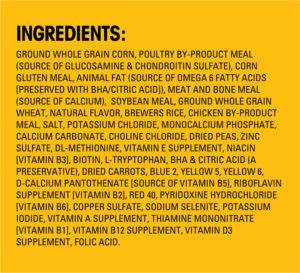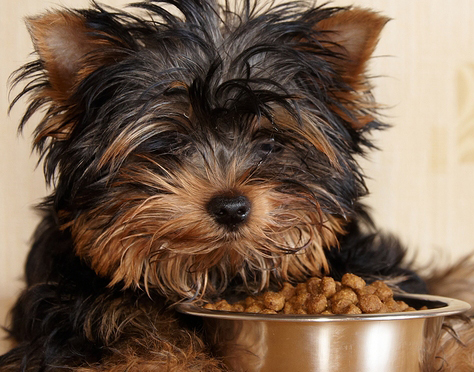
June 3, 2019 | Tags: advice, food, tips
There’s no doubt about it. Choosing puppy food and dog food is hard!
Do you choose grain-free because that’s what you’ve read is best? Do you feed the one with the awesome packaging that looks all natural and organic? Or do you feed the one Mrs. Johnson feeds because she’s had dogs for 20 years and never had any issues?
How do you Choose?
Quite simply, you choose the puppy food that meets the nutritional needs of your puppy. This may well be the natural and organic or even the one that Mrs. Johnson feeds, but you figure it out by reading the label.
 If you have a large or giant breed (those that will get to 70 and 100 pounds in weight, respectively), the label should state whether it is suitable to them or not. Looking for phrases like “includes large breeds” or “except for large breeds” is key.
If you have a large or giant breed (those that will get to 70 and 100 pounds in weight, respectively), the label should state whether it is suitable to them or not. Looking for phrases like “includes large breeds” or “except for large breeds” is key.
What is the American Feed Control Officials?
Once you know it is suitable for a puppy and his breed/size, you need to check the ingredients list. Some accepted ingredients according to the Association of American Feed Control Officials include meat, meat by-products, poultry and by-products along with a range of accepted vitamins and minerals.
The ingredients list should be by predominance of weight. Ideally, the first ingredient should be a meat source. Where possible, you should avoid ingredients like carrageenan, propylene glycol, food dyes, corn syrup, xylitol, ethoxyquin, butylated hydroxytoluene and hydroxyanisole and sorbitol. These have all been linked with a range of health issues.
Look at the Label
Ideally you should be looking for label that reads something like this: turkey/chicken/actual meat source, chicken meal, potatoes, carrots, alfalfa, salmon oil, (vitamins and minerals…). And avoiding labels like this: ground corn, poultry by-product, corn gluten meal, ground whole grain wheat, animal fat preserved with BHT/BHA, natural poultry flavor, salt…
 Once you recognize the ingredients as actual food sources, take a look at the nutritional information. This tells you whether the food will meet your pup’s growing needs.
Once you recognize the ingredients as actual food sources, take a look at the nutritional information. This tells you whether the food will meet your pup’s growing needs.
Protein and fat content are most important for your puppy. As a general guide, look for a puppy food which has at least 30% protein and 8-9% fat. Large breeds need no more than 1.5% calcium content, but small-medium breeds can have a higher content.
Found the Right Food?
You’re now confident that the food will met his nutritional requirements but just behind the one you’ve picked up is a grain-free food.
The nutritional profile looks great as do the ingredients – even though they are a little different. Which should you choose? Is grain-free really better?
If you believe your pup has an issue with digesting or tolerating grains, then you need to seek the advice of a veterinarian or qualified dietician. While some dogs have thrived on grain-free diets, there are concerns of a link between grain-free diets and canine heart disease in dogs not typically prone to the disease.
Introducing New Food
Gradually introducing the new food is important. Use a mix of the old and new food, starting with more of the old food first. It is OK to take up to a week to transition to the new puppy food. There is no need to rush!
Be sure to watch for signs of digestive discomfort – vomiting, loose stools or bloating. These signs suggest you’re swapping the food too quickly, or the food just doesn’t suit your pup! First try reducing the amount of the new food and introduce even more gradually. If that doesn’t work, look for another option. With the range of puppy foods on the market, pet parents have a lot of choices.

Bottom Line
You need to choose food that meets his nutritional needs and is appropriate for his life stage and size/breed. Make sure you recognize the ingredients as food sources and be mindful of those ingredients deemed unsafe.
This Article was written by All Things Dogs.
Source: Read Full Article